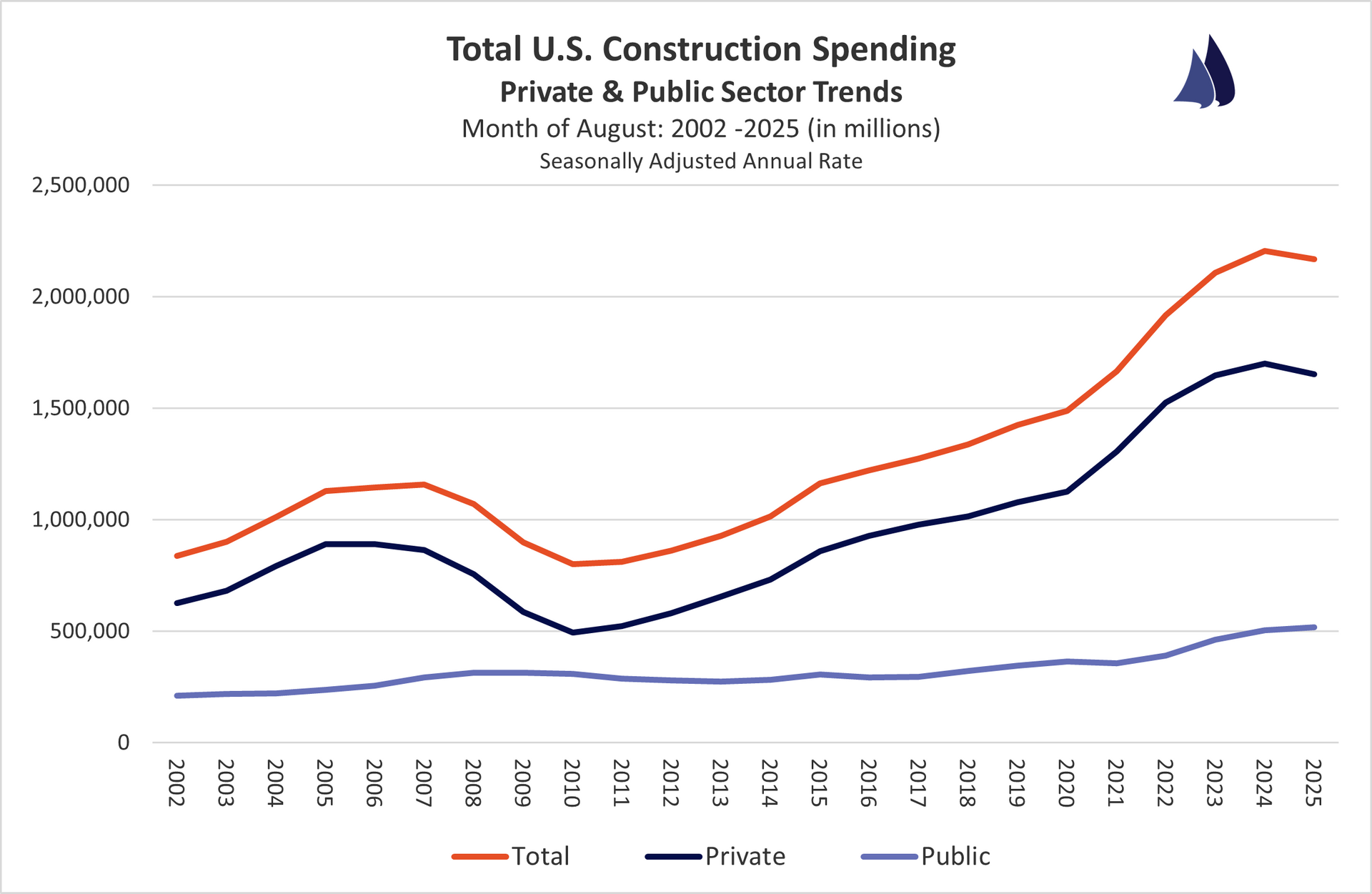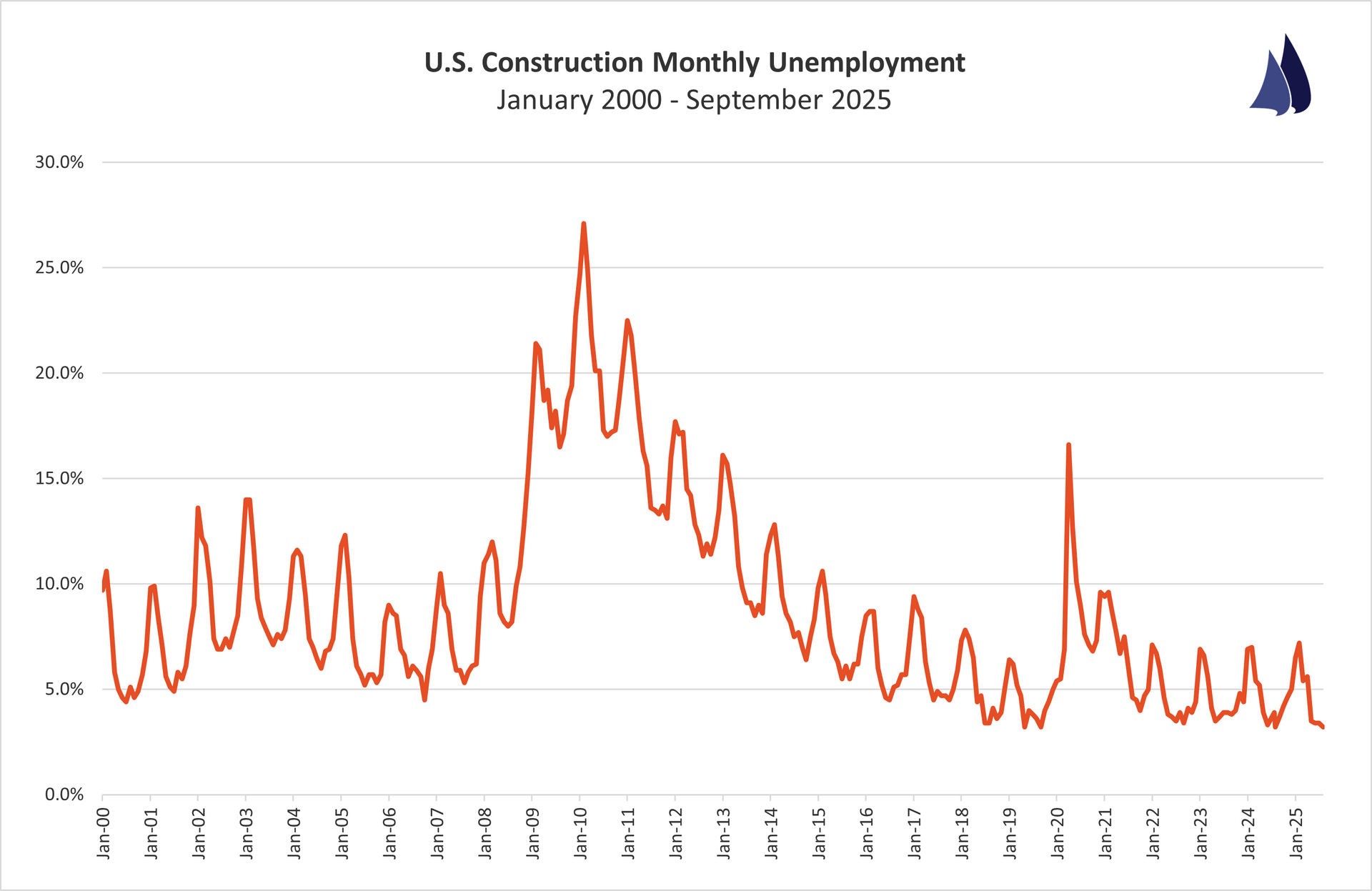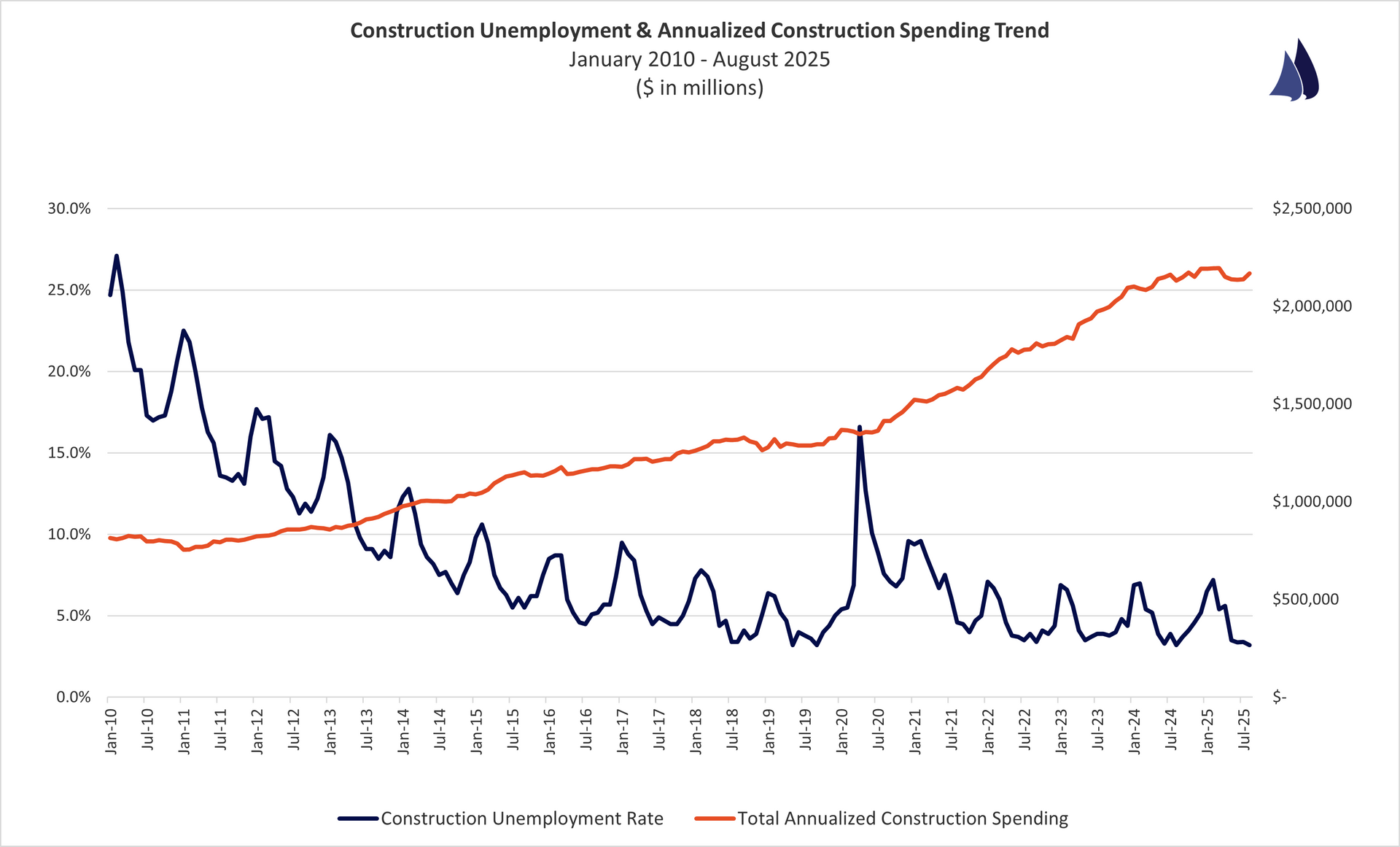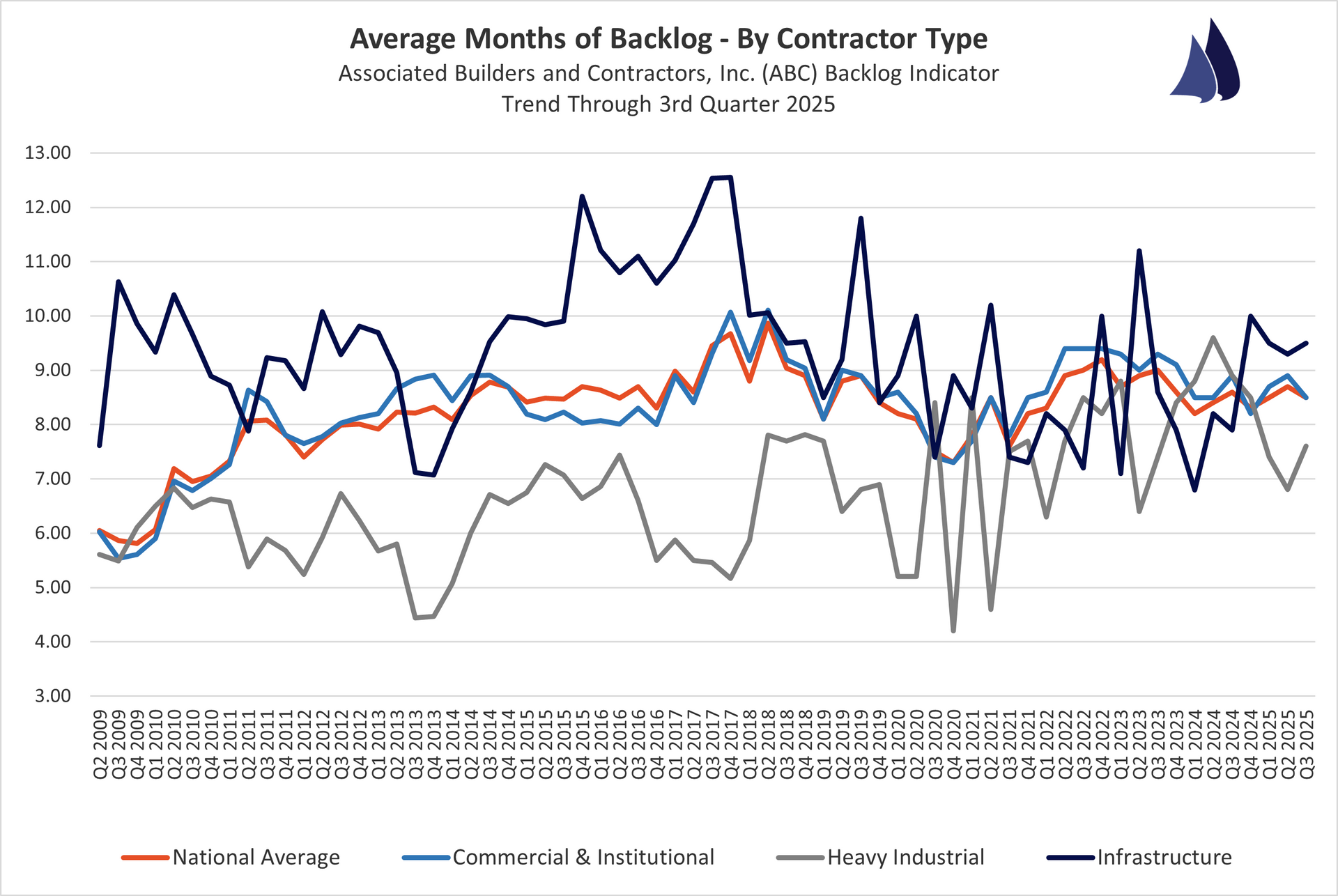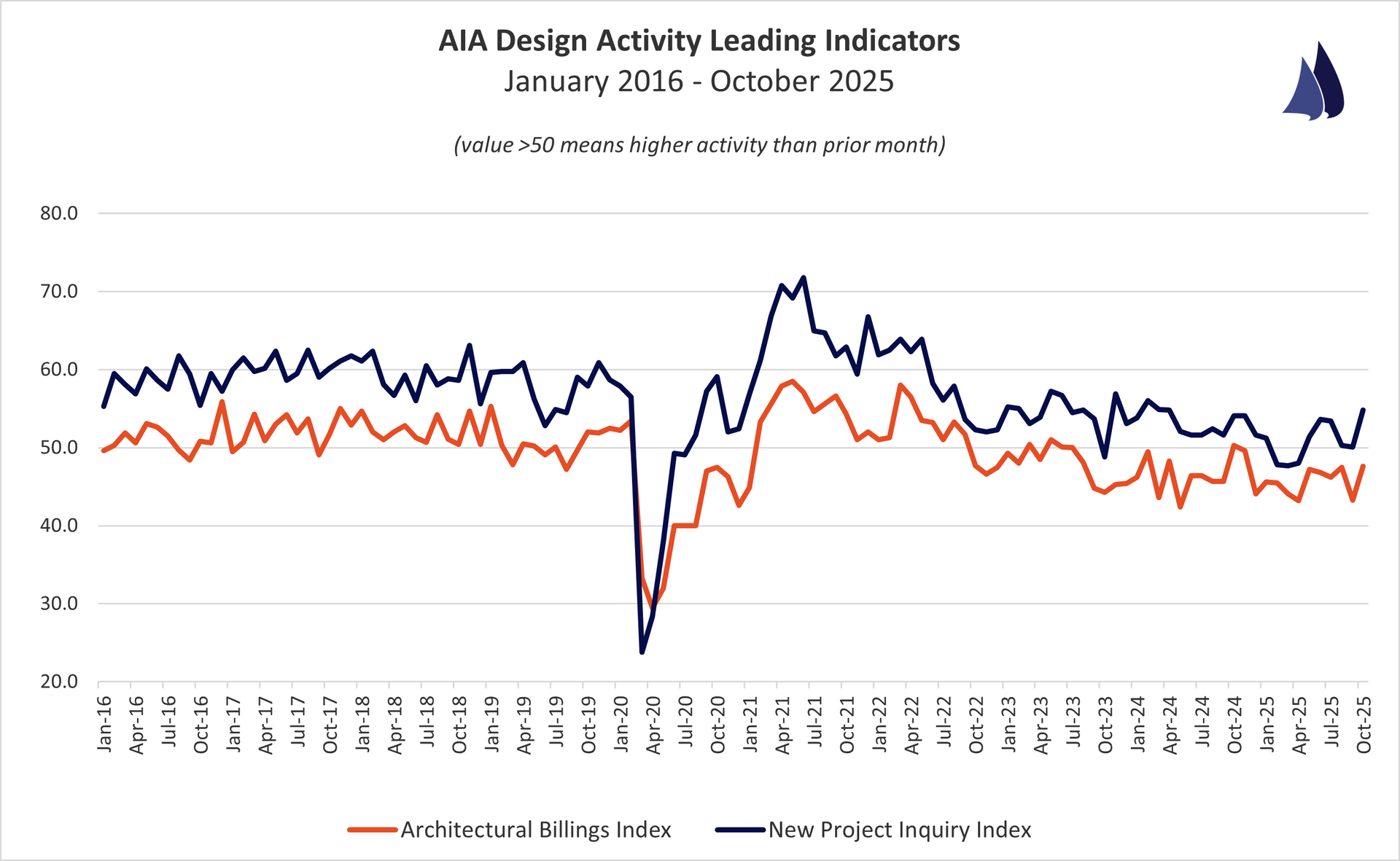Catalyst Construction Economics Hub
Know where the industry is.Know where it's headed.
Data Which Reflects Where the Industry Is Today
Construction Spending
U.S. Census Bureau - Construction Spending
Year-To-Date Annual Total - Seasonally Adjusted Annual Rate
August 2025 vs. August 2024
All Construction Spending: -1.6%
Public Construction: +2.7%
Private Construction: -2.9%
Residential Construction: -1.8%
Non-Residential Construction: -1.5%
Quick Analysis:
Construction spending in August 2025 slipped slightly compared to August 2024, with total expenditures down 1.6% year-over-year. The decline was driven primarily by the private sector, where spending fell 2.9%, including a 1.8% drop in residential construction and a 1.5% decline in non-residential work. In contrast, public construction continued to show strength, increasing 2.7% and providing a steady source of project activity. Overall, the data reflects a market where government-funded projects are propping up demand while private owners and developers remain more cautious.
Notable Increases/Decreases By Type:
- Sewage and Waste Disposal - Spending is up 8.2% versus 2024
- Water Supply - Spending is up 3.3% versus 2024
- Commercial - Spending is down 7.5% versus 2024
- New Multifamily - Spending is down 7.1% versus 2024
https://www.census.gov/construction/c30/c30index.html
Construction Costs
ENR Construction Cost Index
November 2025 vs. November 2024
Total Construction Costs: +3.4%
Building Cost Index: +4.0%
Material Cost Index: +2.0%
Skilled Labor Costs: +5.7%
Common Labor Costs: +4.0%
Quick Analysis:
ENR reported total construction costs as up 3.4% year-over-year in late November. Labor cost increases have accelerated in the later months of 2025.
http://enr.construction.com/economics/
Construction Employment
U.S. Bureau of Labor Statistics
September 2025
Construction Unemployment: 3.8%
Quick Analysis:
In September 2025, construction unemployment came in at 3.8%. This unemployment readying is right on par with the industry's reported unemployment rate for the month of September each of the prior three years.
http://data.bls.gov/timeseries/LNU04032231?data_tool=XGtable
Contractor Backlogs
ABC Backlog Indicator
September 2025 (3rd Quarter)
National Avg. Backlog: 8.5 months
Backlog By Region:
South: 9.9 months | Northeast: 7.6 months | Middle States: 8.6 months | West: 7.5 months
Backlog By Company Revenue:
<$30 Million: 7.8 months | $30-$50 Million : 7.8 months | $50-$100 Million: 8.3 months | >$100 Million: 12.5 months
Backlog By Industry:
Commercial & Institutional: 8.5 months | Heavy Industrial: 7.6 months | Infrastructure: 9.5 months
Quick Analysis:
In September 2025, the Construction Backlog Indicator (CBI) held steady at 8.5 months, down just 0.1 months compared to the previous year. Sector-wise, backlogs declined in the commercial, institutional, and heavy industrial categories but rose notably in the infrastructure segment. Smaller contractors with less than $30 million in annual revenue experienced the sharpest declines, while larger firms maintained or expanded their backlogs. Regionally, backlog strength was concentrated in areas with strong infrastructure and data center development, indicating public-sector and technology-driven projects are sustaining activity nationwide despite broader softness.
http://www.abc.org/NewsMedia/ConstructionEconomics/ConstructionBacklogIndicator/
Data Which Reflects Where the Industry Is Headed
Architectural Billings
AIA Architectural Billings Index
October 2025
Architectural Billings Index (ABI): 47.6
New Design Contract Index (DCI): 47.1
Commercial/Industrial ABI: 43.9
Institutional ABI: 46.1
Multi-Family Residential ABI: 46.8
Mixed Practice ABI: 44.0
South Region ABI: 45.3
West Region ABI: 42.1
Midwest Region ABI: 49.6
Northeast Region ABI: 45.1
New Project Inquiry Index (NPII): 54.8
Quick Analysis:
Index value > 50 represents that architects have reported more activity for that particular metric than the prior month. These metrics are leading indicators as the ABI reflects projects in design that will enter the construction phase in 9 to 12 months and the NPII reflects new project demand from owners to potentially enter the design phase.
The American Institute of Architects’ Architecture Billings Index (ABI) rose to 47.6 in October from 43.3 in September, indicating fewer firms reporting declines in billings. Although the index remains below the 50-point threshold (meaning billings are still contracting overall), new project inquiries surged to 54.8, their highest in about a year and a half. Despite this uptick in inquiries, new design contract activity remained weak at 47.1, and many firms are forecasting little to no growth in billings through 2026
http://new.aia.org/press-releases

